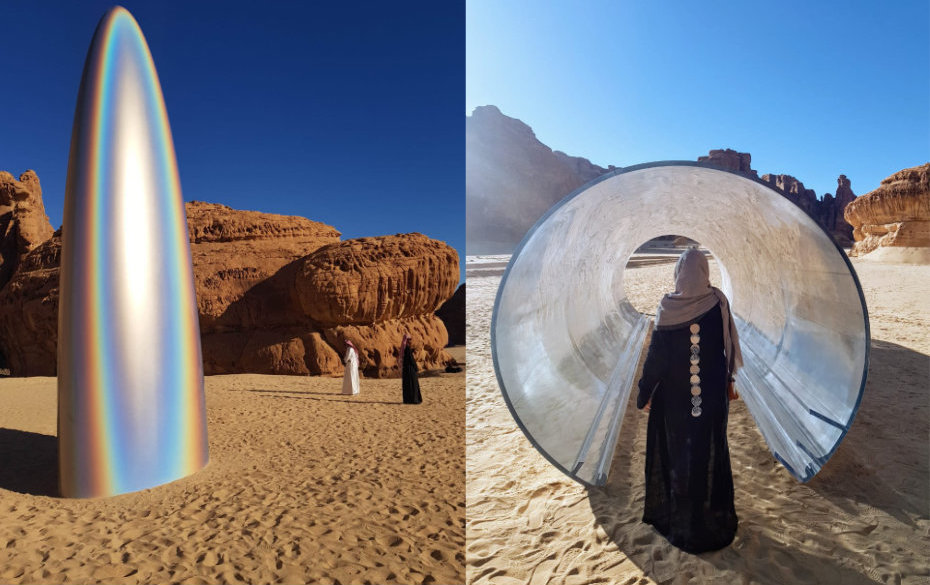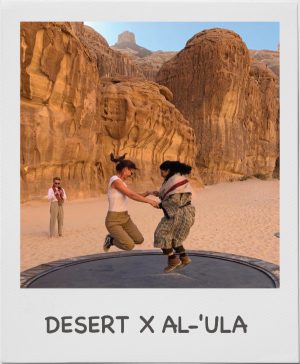When Desert X – a young biennial from California – announced it would be producing an exhibition in the Saudi desert site of Al-Ula, it ignited a firestorm of international opposition. Three board members resigned, including Ed Ruscha, in order to protest the collaboration with the Saudi state. Discussions about boycotts dominated coverage.
The furor displaced one element that had been significant in other announcement of brand names from the West setting up outposts abroad: the idea of the franchise. Where Louvre Abu Dhabi, Guggenheim Abu Dhabi or the Shanghai Pompidou (formally known as Centre Pompidou × West Bund Museum Project) weathered substantial criticism for being Western transplants, the Southern Californian origins of Desert X Al-Ula flew under the radar. How come? And what is the larger significance of this latest edition of institutional franchise culture?
Firstly, some background. The main source of discontent with franchises is that governments are bringing in top-down, external organizations, rather than investing in grass-roots curation, in what many see as quasi-colonialism. In the case of Saudi, this allegation is dulled by the fact that the Royal Commission for Al-Ula, who are overseeing the development of Al-Ula, do indeed have plans for site-specific contemporary art works to be installed across the site. Titled Visionary Dreaming, it is one of a number of ways in which the site will be developed as a major cultural and tourist destination. (The plans call for eight museums, featuring art to geology to oral histories.) It is unclear why Visionary Dreaming didn’t go ahead first, and how embedded in the local art scene that project will be. The entities behind the current large-scale development of the Saudi art landscape include a number of international consultants — a kind of franchise element behind the scenes – as well as important long-term stakeholders and artists in Jeddah and Riyadh.
Broadly speaking, it would appear that the Saudi government has learned from other art scenes that have quickly built themselves up, and I would also wager that Saudi pride has made the development of the arts scene more homegrown. The country’s feeling of exceptionalism – buttressed by the fact that its immensely restrictive social and civic policies have indeed been exceptional over the past forty years – has made Desert X Al-Ula unusual so far in Saudi policy. The primary drivers of the infrastructural investment are the newly created Ministry of Culture, and to a lesser extent the Misk Art Institute, the Royal Commission for Al-Ula, and Art Jameel, a private family foundation. Among the many plans in the offing for biennials, festivals, exhibitions, and institutions, there are no flagship museums bearing the name of Western Cultural Organisation plus that of a Saudi City.
And despite the initial controversies stateside, Desert X Al-Ula was largely a success. The works were spectacular enough to hold their own among the breathtaking Al-Ula scenery without becoming pure spectacle, and no doubt Desert X’s experience was crucial here. Neville Wakefield, the artistic director of Desert X Al-Ula, curated the show alongside Raneem Farsi and Aya Alireza, both from Saudi. The mix was very bride’s side and groom’s side at a cross-cultural wedding: you were either connected to Desert X or Al-Ula. Gisela Colon reprised the futuristic obelisk she has made before for Desert X; almost turning Colon’s work on its side, the Medina-based Nasser Al Salem created a reflective tunnel that was inspired by Arabic calligraphy.

The Saudi works showed a better understanding of context, and there were a few missteps on the international side, such as a blue woman meditating in an abaya, part of a work by the artist Lita Albuquerque that conflated two world cultures. But on the whole, many strategies were shared across both groups, such as play as a mode of engagement with the audience, and the quality was even across the board. The Saudi artist Manal Al Dowayan created joyful trampolines, inspired by the puddles that sometimes form in Al-Ula after rainfall, while the Danish collective Superflex offered its swings for three people, their legs rising over the canyon below. Others looked to the history of the site, such as Zahra Al Ghamdi’s river comprised of sand taken from all regions of the kingdom, which referenced the trade routes that formerly ran through the site.
But whether or not Desert X Al-Ula bears the name of its foreign source, the project shares some key strategic goals with Abu Dhabi’s Saadiyat Island project: the use of art to launch smaller art scenes onto the international stage, and – crucially – to signal liberal intentions. As the Saudis diversify their economy beyond oil, they are looking to build up the creative and cultural industries as well as tourism. Art offers economic opportunity as well as the credibility of investing in a progressive field – and within this mix, franchises bring name recognition. They also operate as capacity-building, for a country that not only has no curatorial or art-infrastructural precedents in the work place, nor the pedagogical emphasis on critical and creative thinking that would prepare young graduates for these roles. It is worth remembering that franchises suffuse civic life in the Gulf and other newly wealthy entities. In the education sector, elite schools and universities frequently run overseas campuses: Harrow Hong Kong; North London Collegiate Dubai, Georgetown Qatar, New York University Abu Dhabi, etc. In government, analysts and investment professionals are headhunted both to lead on projects and to train up young workers. This overseas hiring is explicitly seen as a midway step (though in reality capacity-building is progressing slower than intended). Policies in the Gulf of nationalization of the work force, known as Saudisation or Emiratisation, which have been implemented in the past decade are aimed to ensure that ultimately the country’s labor force becomes self-sufficient. This means franchises could well be phased out: I’ll stake quite a lot of money on the bet that when the Louvre name expires in 2042, the Jean Nouvel building in Abu Dhabi will become the Abu Dhabi Museum of Art, folding together the Louvre Abu Dhabi collection, the Abu Dhabi Department of Culture and Tourism’s collection, and (quite possibly) the Guggenheim Abu Dhabi collection.
Founded only in 2017, Desert X is not as famous as the Louvre, and arguably the collaboration has done as much for the still young Southern California biennial as for the Al-Ula site. Any press is good press, after all. Desert X has something most established biennials do not: the site-specific biennial, like Desert X Al-Ula and indeed Louvre Abu Dhabi, masterfully harnesses the power of visual virality. In Al-Ula, it seemed to largely trade curatorial thesis for works that resolved themselves into iconic images, and the sheer amount of Instagram-posting was almost embarrassing, especially considering the rhetoric of peaceful communion in the remote desert. Desert X Al-Ula is only up for five weeks, and even now exists for the most part in its ample digital after-life, in the social media feeds of the chartered plane-load of VIPs that flew out from the opening of 21,39 Jeddah Arts week, and in the stories that ran in the international press. As a form of promotion for a more progressive Saudi Arabia, it was remarkably effective, whether or not you saw in person or liked it from afar.
Melissa Gronlund is a writer in London who specializes in art of the Arab world and moving-image practice. She is the author of Contemporary Art and Digital Culture (Routledge).


